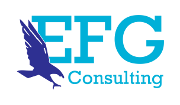Dubai is becoming the Middle East’s medical tourism hotspot, having developed strong initiatives over the course of 2016 to attract foreign patients. Regional instability has stifled the growth of competitors in the region, bringing Dubai closer to its goal of 1.3 million medical tourists by 2021.
The launching of the world’s first dedicated medical tourism website by the Dubai Health Authority (DHA) in April 2016 stands out as the most significant of the many initiatives introduced over the year. This site provides potential medical tourists with visa and health services, while also providing information on hospitality and leisure. Patients can book hotel stays or even purchase health packages in the nearly 30 hospitals scattered around the Emirate.
Dubai is expected to have received about 600,000 medical tourists in 2016, representing a 12% rise on 2015. In the wider region, however, the overall number of visitors has fallen dramatically as political turmoil and terrorist attacks engulf neighbors. According to the International Medical Travel Journal, the number of medical tourists that visited Jordan decreased by 40% YoY for the first nine months of the year.
The strong potential of this segment is motivating local and international companies to establish strategies for attracting more international patients. “Medical tourism does not account for a huge amount of our business, but we are finding that if we start to open the market and develop stronger strategies for external marketing, medical tourism has the potential to be a successful branch of our business”, commented Dr. Ashraf Kamel, Managing Director of the German Medical Center, in conversation with TBY.
Dr. Kamel pointed out that most of the foreign patients at the German Medical Center come from Oman (nearly 20% of the total), while Saudi Arabian citizens make up one tenth of the total. He added that they also receive patients from Egypt, Syria, Yemen, Afghanistan, and Pakistan.
But Dubai’s top health services are not only appealing to clients from Middle Eastern countries. “We have noticed that the African market is growing significantly,” noted Dr. Yashar Ali Abdulkader, Acting CEO & CMO of the Canadian Specialty Hospital.
The Canadian Specialty Hospital is strongly focused on foreign patients, and in October 2016 was accredited by the international medical tourism body Temos, becoming the second hospital in Dubai to receive this accreditation.
The medical tourism segment has brought higher levels of foreign direct investment to the health sector in general, and this in turn has helped to bolster the economies of neighboring Emirates. With the segment of the Emirati population aged over 65 years projected to increase by a CAGR of 19.6% from 2014 to 2020, a rise in lifestyle-related medical conditions such as diabetes or cancer is expected. As a result, international investors are not only looking into the potential of medical tourism in the Emirates, but into the growing domestic market too.For instance, Mediclinic International, South Africa’s largest private hospital group, bought the firm Al Noor in 2016, a hospital group based predominantly in Abu Dhabi. With this acquisition, Mediclinic International, which was already present in Dubai, doubled its exposure to the UAE’s health market, a sector which requires emirate-by-emirate analysis, according to Mediclinic Middle East CEO David Hadley.
“You need to look at each emirate in isolation,” he stated in a TBY interview. He added that Mediclinic invested in Abu Dhabi to continue growing in the UAE, despite the fact that the acquisition of Al Noor lost value for shareholders. “We paid a high price for Al Noor, but that is what you pay for healthcare companies these days,” he added.
Mediclinic is an example of how to rapidly establish a presence in the UAE. The South African firm arrived in the country in 2007, and now counts six hospitals and 39 clinics across four emirates in its portfolio. The business generated about USD272 million in revenue in 2016.
FONT: thebusinessyear.com

